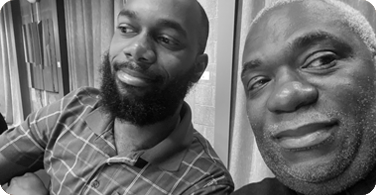One Sunday morning, Derek woke up at home with a very bad migraine. He’s used to getting migraines, but this one was so intense that he drove himself to the emergency room. When he arrived, he immediately met with a doctor who reviewed his chart and said, “It’s not actually a migraine you’re having. It’s a headache.” Derek did not take the doctor’s response lightly.



When describing the situation, Derek said, “She was dismissive in her questioning. It felt like she was trying to shame me.” Derek knew what he was experiencing was a migraine because he had nausea, stomach sickness, dizziness, cloudy vision and ringing in his ears. A few seconds later, he vomited on her, which helped indicate that he had more than a headache. Derek was finally given the pain medication he needed.

Derek left the hospital and drove home. When his wife returned from church, his car was on the front lawn with the doors open and Derek was passed out inside their house, on the floor of the great room. When he woke up, he had no recollection of leaving the hospital.
A few days later, Derek returned to the hospital to file a complaint about being allowed to drive home. The head doctor on duty confirmed that Derek was given a higher dose than he needed because it was assumed a man of his size could handle it. The doctor who gave him the high dose was later reprimanded for making that biased assumption.
This wasn’t the first time Derek experienced medical bias. When asked about the previous experiences expressing pain to doctors, he said, “It’s a double-edged sword. To protect ourselves, we have to hide our pain. But to be served by a medical professional, we have to share that we’re in pain.”